 Skimming across the water along Upper Newport Bay.
Skimming across the water along Upper Newport Bay.
The film Newport Our Bay was commissioned by the Orange County Board of Supervisors and Newport Bay Conservancy. It was shot during the 2020-21 covid pandemic and brings our audience skimming along the surface of Newport Bay and underwater to see marine plants and wildlife. It will soon play, free of charge, in OC Park’s Peter and Mary Muth Interpretive Center, located in Newport Beach, California.
Edited for English and Spanish speaking audiences, this 16-minute film also includes closed-captioning in both languages. The project covers how people use the entire bay; a body of water connected to the Pacific Ocean. The front bay is surrounded by homes and industry while the Back Bay has native pickleweed, a plant that can grow in salt water. The Back Bay also includes the Marine Science Center, a housing development with homes, canals, and recreational opportunities.
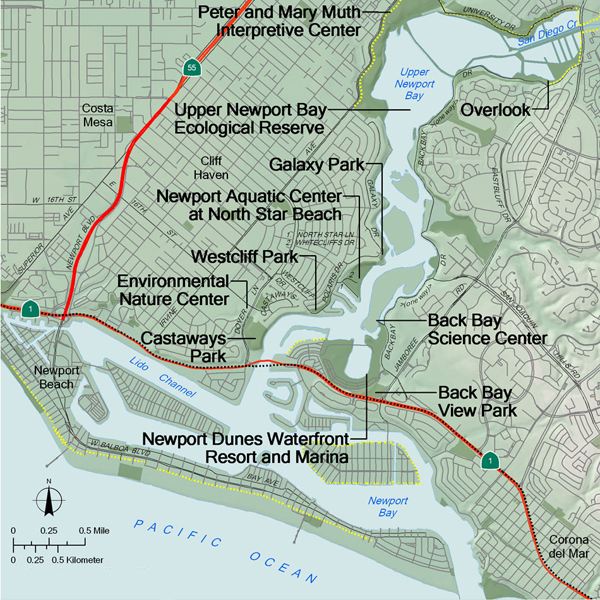 This map is provided by the California Coastal Commission.
This map is provided by the California Coastal Commission. 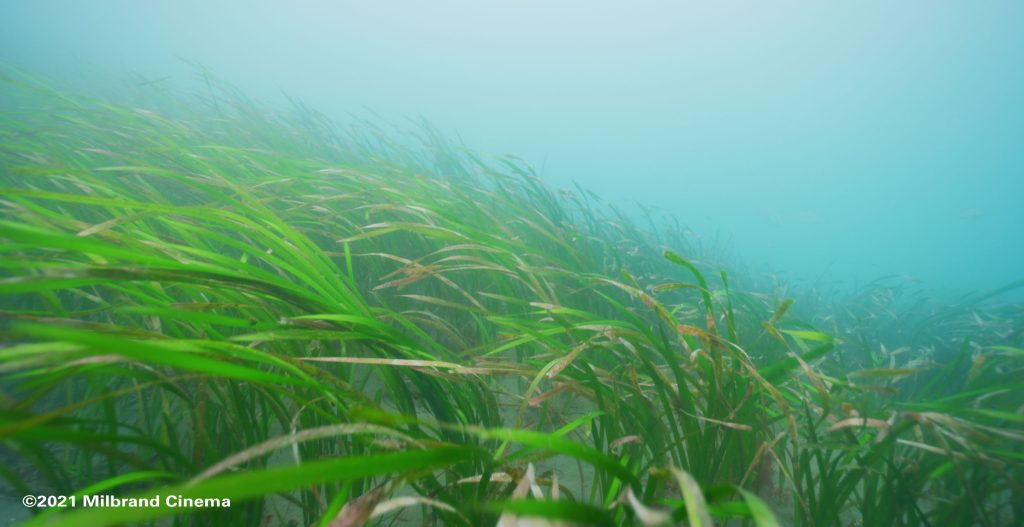 In Southern California, eelgrass is a type of marine plant that grows in shallow wetlands. It provides breeding and feeding habitats for many wetland animals. Creatures that float into the bay from the ocean also depend upon this plant for habitat. Roots of the eel grass hold the sediment in place, helping to keep the shoreline from receding during big winter storms.
In Southern California, eelgrass is a type of marine plant that grows in shallow wetlands. It provides breeding and feeding habitats for many wetland animals. Creatures that float into the bay from the ocean also depend upon this plant for habitat. Roots of the eel grass hold the sediment in place, helping to keep the shoreline from receding during big winter storms. 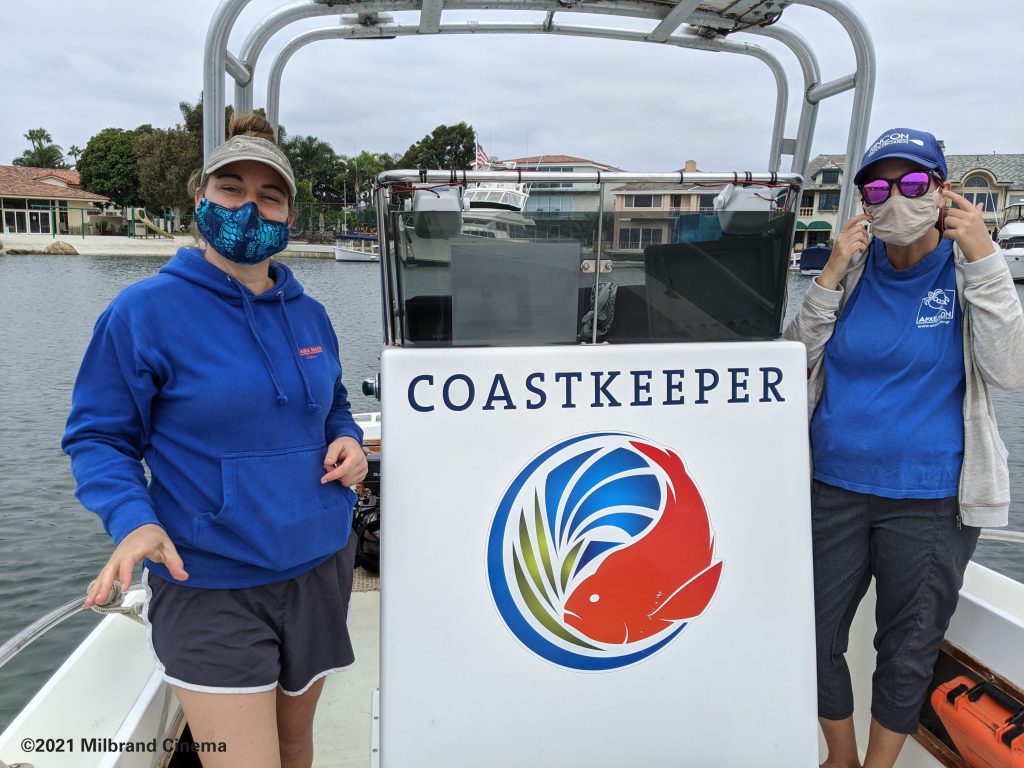 Lance Milbrand had two assistants that helped a great deal, Carissa Macias on the left and Katie Nichols.
Lance Milbrand had two assistants that helped a great deal, Carissa Macias on the left and Katie Nichols.
Carissa worked for Newport Bay Conservancy as their education specialist. Carissa has a background in marine biology and her knowledge came in handy by identifying an invasive seaweed. Katie worked for OC Coastkeeper. We utilized Katies’ boat captaining skills to motor us around in the bay. We tied off the skiff to many a mooring buoy and discovered a lot of interesting creatures. It was tough, always having to wear a covid mask on the surface but we all managed to stay healthy.
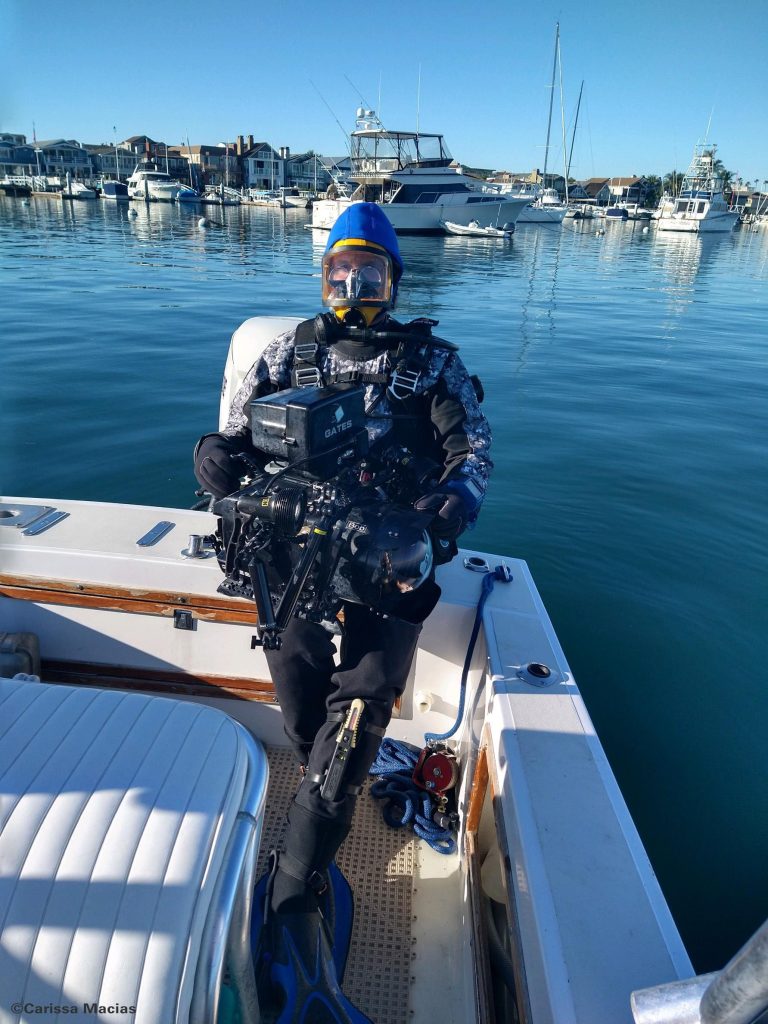 During Newport Our Bay, Lance Milbrand used a DUI drysuit which kept him warm and dry. The AGA full face mask had additional reading glasses to help with focusing the camera. The cinema camera was made here in Irvine, CA and is called a RED camera. To keep the camera dry and to access manual controls, Lance used a Gates Underwater Housing, the professional standard, and to light the subjects, Light and Motion underwater lights.
During Newport Our Bay, Lance Milbrand used a DUI drysuit which kept him warm and dry. The AGA full face mask had additional reading glasses to help with focusing the camera. The cinema camera was made here in Irvine, CA and is called a RED camera. To keep the camera dry and to access manual controls, Lance used a Gates Underwater Housing, the professional standard, and to light the subjects, Light and Motion underwater lights.
Each dive lasted 40 to 60 minutes. The success of underwater filmmaking is dependent on knowing the location of the creatures and having good underwater buoyancy control. For instance, disturbing the bottom of the bay during filming will result in sediment floating in front of the lens, rendering the shot useless. On average, the visibility underwater measured 15-20 feet, which is not bad for a wetland or harbor.
Once shooting started, Milbrand Cinema wrote a draft script, which was updated after each shoot. While in past underwater surveys, the California Department of Fish and Wildlife had an idea of what we might encounter, but no one really knew what to expect in the cold, murky water. We planned our dive trips on incoming, slack tides and tried to avoid the rain.
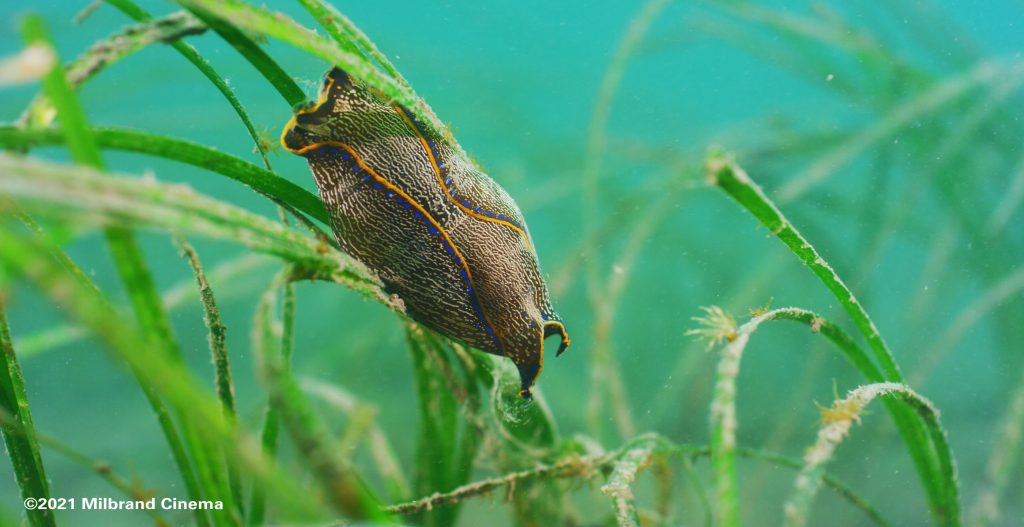 This is a Navanax, a type of sea slug, also called a nudibranch. They are predators, feeding on other invertebrates, snails, even small fish. Note how this creature is rolled up, like a burrito.
This is a Navanax, a type of sea slug, also called a nudibranch. They are predators, feeding on other invertebrates, snails, even small fish. Note how this creature is rolled up, like a burrito.  The Navanax can reproduce all by themselves or in small groups. During the winter, our camera captured them mating. These animals were about as large as your index finger but in other wetlands can grow to be much larger. During their mating ritual, they unravel, and their inner body parts are exposed.
The Navanax can reproduce all by themselves or in small groups. During the winter, our camera captured them mating. These animals were about as large as your index finger but in other wetlands can grow to be much larger. During their mating ritual, they unravel, and their inner body parts are exposed.
When shooting an underwater movie, getting close to wildlife is key. Close proximity makes for better video colors and helps with keeping the image sharp. However, the problem with getting close to a fish or a lobster is that you might frighten it and it scurries away. This meant Lance had to move very slowly and carefully to capture the close-up scenes.
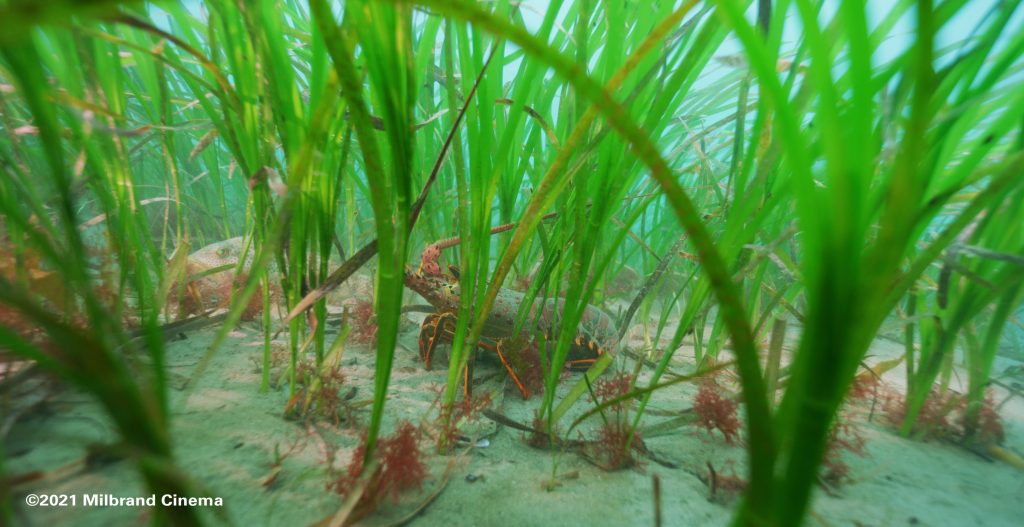 Within the shallow eelgrass, this spiny lobster was recorded feeding on red algae while the spotted bay bass looks on. Both species are on the fisherman’s menu, but they have seasons and size limits.
Within the shallow eelgrass, this spiny lobster was recorded feeding on red algae while the spotted bay bass looks on. Both species are on the fisherman’s menu, but they have seasons and size limits. 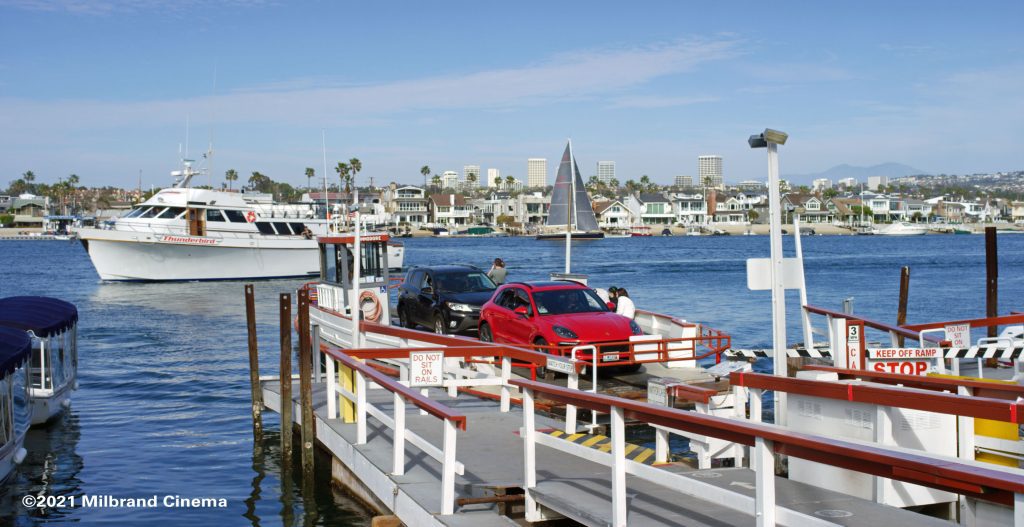 A ferry that transports people and cars across the bay (the Balboa Island Ferry) has been in business for over 100-years. It connects Balboa Island to the Balboa Peninsula.
A ferry that transports people and cars across the bay (the Balboa Island Ferry) has been in business for over 100-years. It connects Balboa Island to the Balboa Peninsula.
Thousands of boats are docked or moored in Newport Harbor. Boating, paddleboarding, kayaking are very popular activities. Visitors can go deep sea fishing or hire a boat and explore the area. While diving, we made sure to stay out of the way of all boat traffic! Very few people go underwater to see what lives down there.
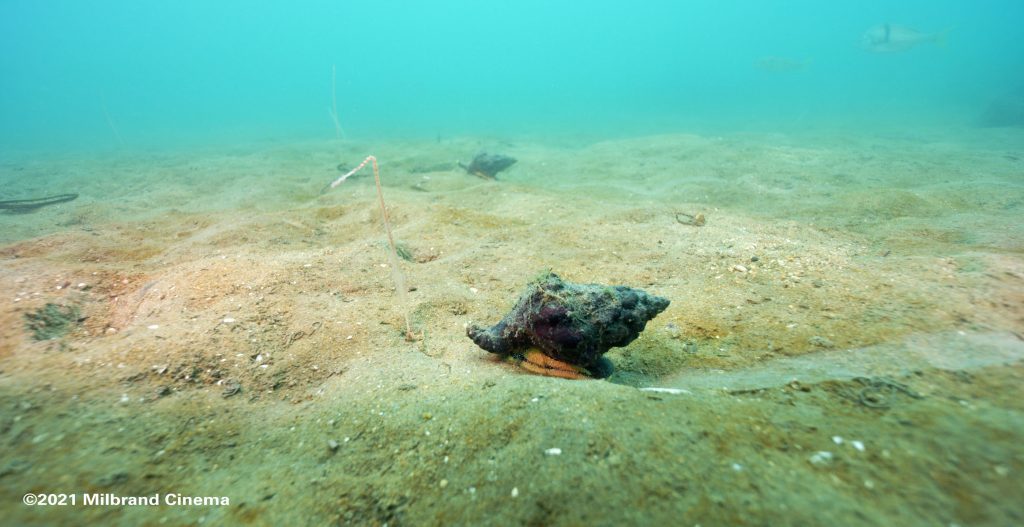 Snails, like this Kellet’s whelk can be found cruising along the bottom. In the film, we discovered an area where they come together to mate and lay eggs.
Snails, like this Kellet’s whelk can be found cruising along the bottom. In the film, we discovered an area where they come together to mate and lay eggs. 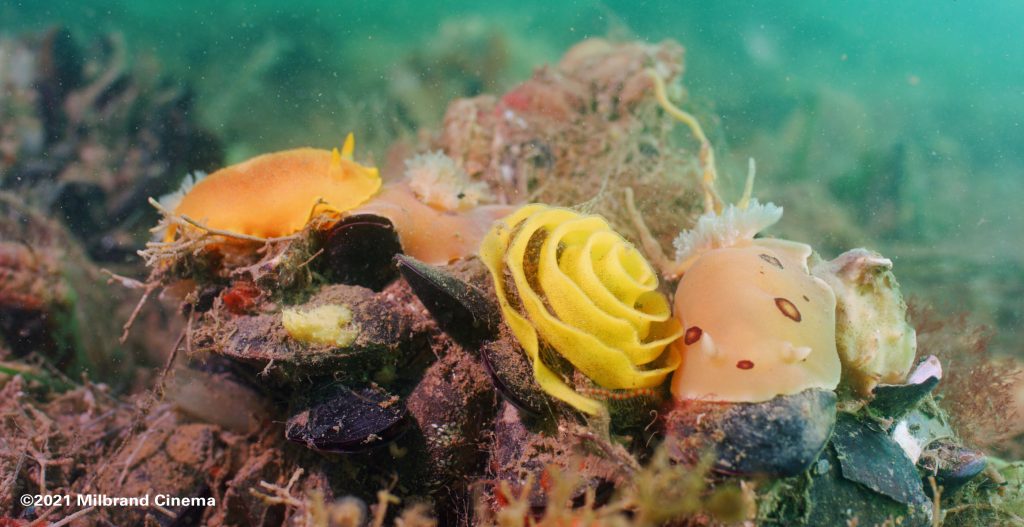 This image has a lot going on. We can see three dorid nudibranch and their spiral egg casing, a few California mussel, some sponge and even the red and white arm of a brittle sea star.
This image has a lot going on. We can see three dorid nudibranch and their spiral egg casing, a few California mussel, some sponge and even the red and white arm of a brittle sea star. 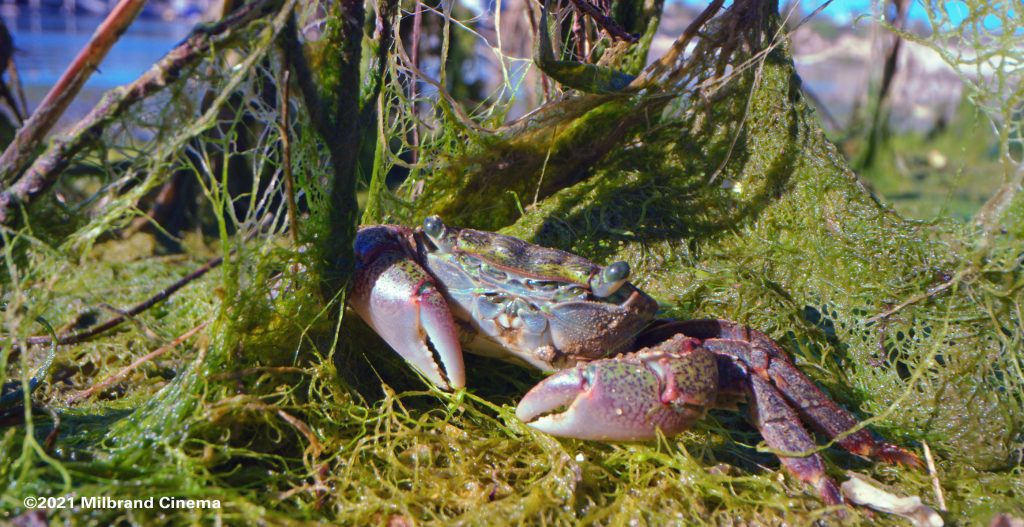 A creature which depends upon wetland and rocky shore habitat is the striped shore crab.
A creature which depends upon wetland and rocky shore habitat is the striped shore crab. 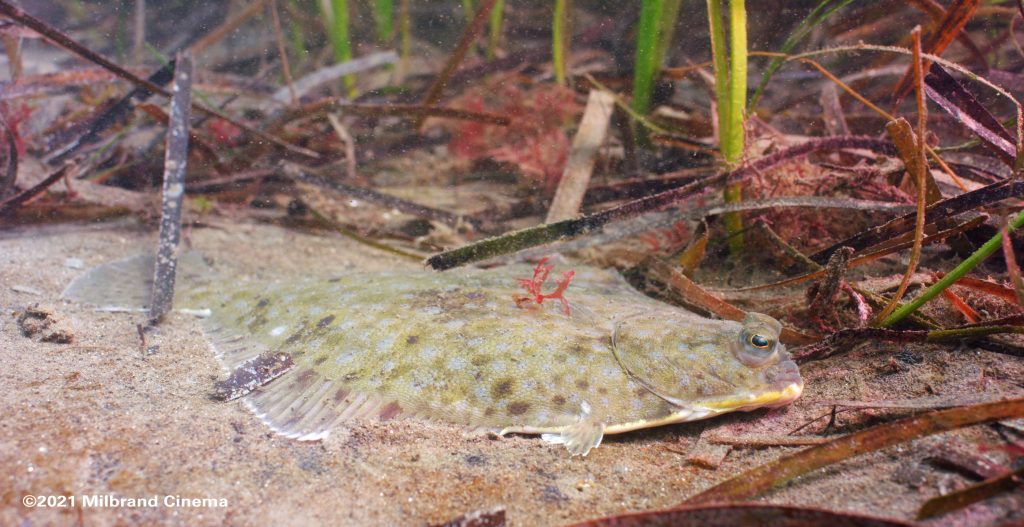 Laying in the mud, not far from shore is the diamond turbot, a flatfish that feeds on worms, mollusk and shrimp.
Laying in the mud, not far from shore is the diamond turbot, a flatfish that feeds on worms, mollusk and shrimp. 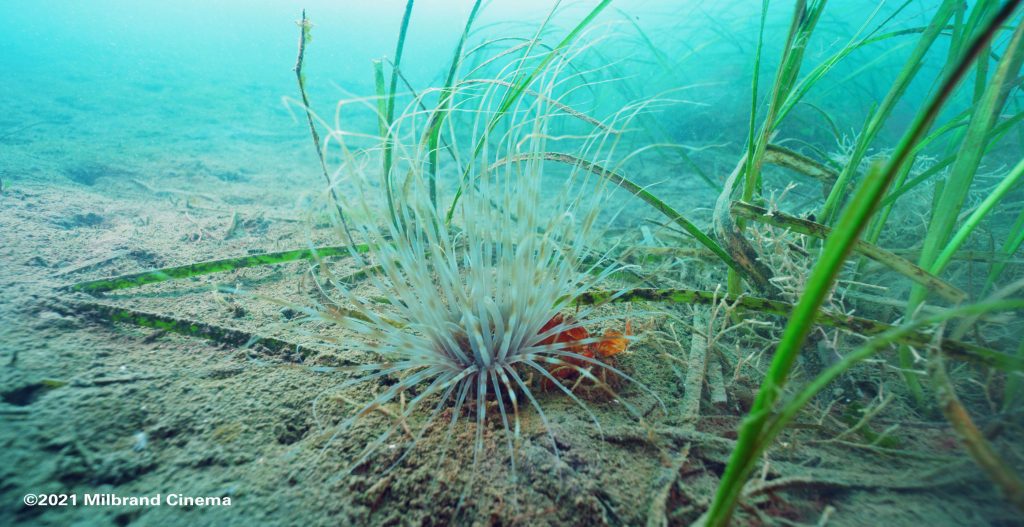 Anemone of various sizes and colors live in the bay, many of which feed upon microscopic food that drifts by. This is a burrowing anemone. To see what they feed on, please visit an earlier Blog Post “Milbrand Cinema, Plankton in Newport Bay”.
Anemone of various sizes and colors live in the bay, many of which feed upon microscopic food that drifts by. This is a burrowing anemone. To see what they feed on, please visit an earlier Blog Post “Milbrand Cinema, Plankton in Newport Bay”.  This sunrise was captured in Upper Newport Bay, near the Muth Center.
This sunrise was captured in Upper Newport Bay, near the Muth Center.
Newport Our Bay, a free 16-minute film, will premiere in late June 2022 at the Peter and Mary Muth Interpretive Center, located at 2301 University Drive – Newport Beach, CA 92660. https://newportbay.org/facilities/muth-interpretive-center/the-ic/

